Have you ever considered planting marigolds in your garden to reap unique benefits apart from the usual aesthetic appeal? Marigolds are surprisingly versatile flowers that can help your garden in many different ways. By introducing marigolds into the mix, you can naturally increase the health of your plants without using chemical fertilizers or pesticides. This article will explore how marigolds can help gardeners unlock hidden benefits for their gardens.
What are Marigolds?
Marigolds are annual flowering plants from the family of Asteraceae, and genus Tagetes. They are native to the Americas, including Mexico and Central America, but they have been naturalized in many parts of the world. Marigolds come in a variety of sizes and colors, ranging from yellow to reddish-orange. They bloom throughout the warm season and provide color for garden beds and containers. In addition to their beauty, marigolds offer numerous benefits.
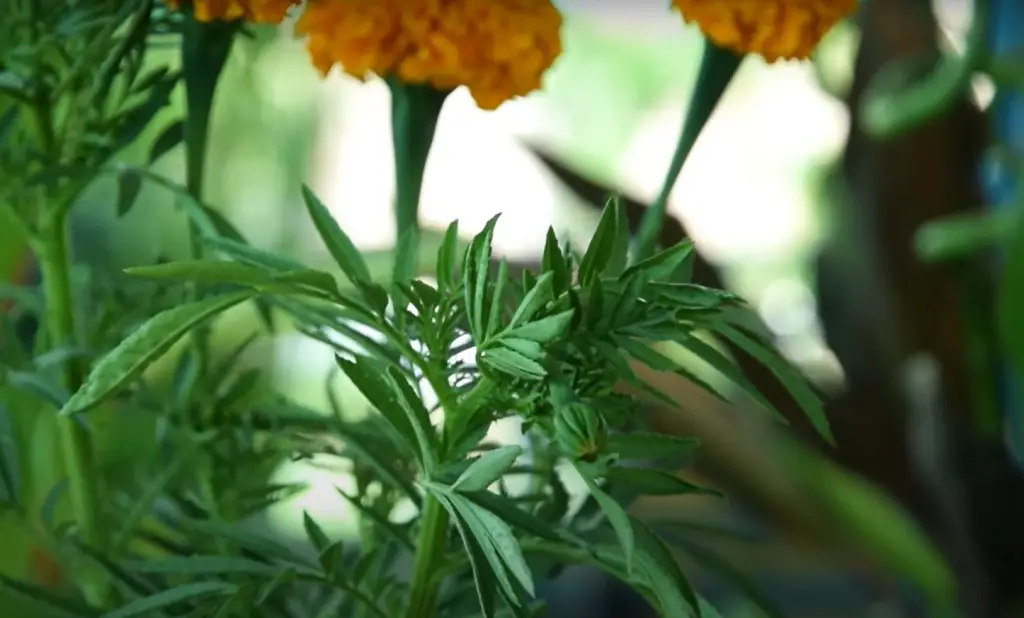
One of the most beneficial aspects of growing marigolds is that they repel insects like aphids, mosquitoes, root maggots, leafhoppers, nematodes, squash bugs, tomato hornworms, and whiteflies. The flowers release an odor that many insects find unappealing, thus keeping them away from other plants in the garden. Marigolds may even attract beneficial insects like hoverflies and ladybugs, which help to keep pest populations under control.
In addition to repelling insects, marigolds can also benefit soil health. The flowers are known for their ability to accumulate nitrogen from the air and transfer it into the soil. This helps create a more balanced nutrient content in your garden beds, resulting in better plant growth and overall improved fertility of the land. Finally, marigolds act as a natural compost activator by breaking down organic matter faster than other plants. This speeds up the process of creating nutrient-rich compost for your garden.
Overall, planting marigolds in your garden is a great way to ensure that you have fewer pests and healthier soil. Their bright colors also add beauty to any outdoor space, making them the perfect addition for gardeners of all skill levels. So if you’re looking for an easy way to protect your plants while adding some color to your garden, then marigolds are the ideal option [1]!
How to Plant Marigolds?
Marigolds can be planted either from seed or from transplants.
Sow seeds about half an inch deep and cover them with soil. Space the seeds about six inches apart to give them enough room for growth. When planting from transplants, be sure to plant them at the same depth they were growing in their original container.Once planted, marigolds require full sun and moist soil to thrive. Water regularly during dry periods and provide a layer of mulch around the base of plants to help retain moisture and prevent weeds from taking over. You may also want to fertilize your marigolds every few weeks with a balanced fertilizer or compost tea for the best results.
With a bit of care, you’ll soon be rewarded with an abundance of beautiful blooms all season long! Plus, you’ll have the added benefit of insect control as well as natural nutrient input to your soil. So, don’t wait any longer – start planting marigolds today and enjoy all the benefits they have to offer [2]!
Reasons To Grow Marigolds In The Vegetable Garden
Marigolds Are Easy To Grow
Marigolds are incredibly easy to grow and require very little maintenance.
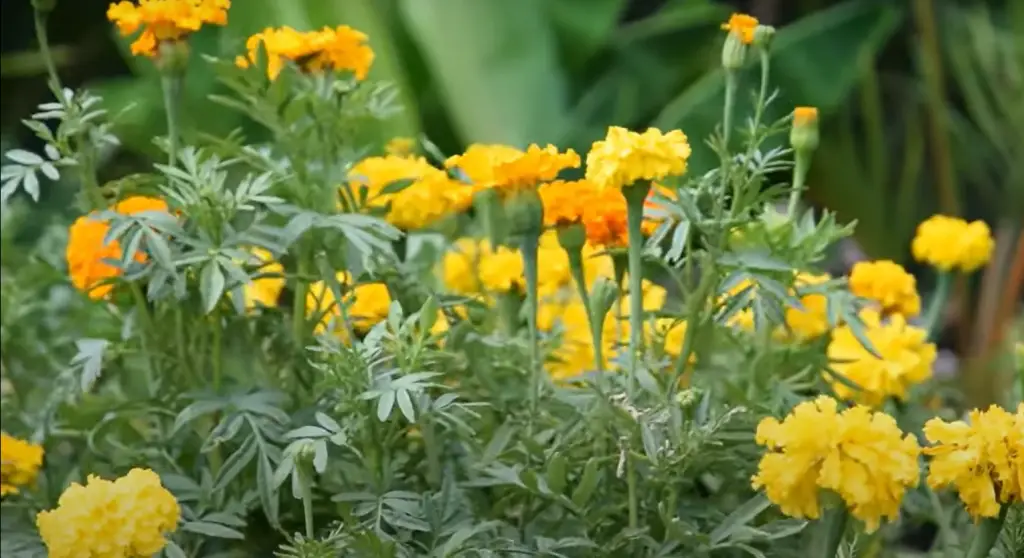
They thrive in sunny, well-drained spots with moderate moisture. Marigolds tolerate a wide range of soil types but do best in loamy or sandy soil that has been amended with compost.
Cheerful Color & Fragrance
Marigold flowers come in a variety of shades such as orange, yellow, white, and bicolor. Some varieties also have a sweet scent when touched or brushed against. Planting marigolds along the perimeter of your vegetable garden can help create an attractive border while also providing a touch of cheerfulness to the area.
Marigolds Are Edible Plants
Marigolds are edible plants and can often be used in salads, as a garnish, or to flavor soups.
They are also packed with Vitamin A, which is essential for healthy vision and immunity.Produce Chemicals Effective Against Harmful Nematodes
Marigolds are known to produce chemicals that can be effective against certain types of harmful nematodes. These tiny worms live in the soil and feed on plant roots, causing damage and stunting the growth of plants. Planting marigolds near or among crops helps prevent this type of damage.
Attract Beneficial Insects & Pollinators
Marigolds attract beneficial insects such as bees, ladybugs, butterflies, and hoverflies which help pollinate crops. This is important for a healthy harvest as these insects help transfer pollen from flower to flower which increases fruit set and yields. They also provide natural pest control by preying on harmful bugs that could otherwise damage your garden.
Marigolds May Be an Effective Trap Crop
Marigolds act as a trap plant, luring pests away from your vegetables and towards themselves.
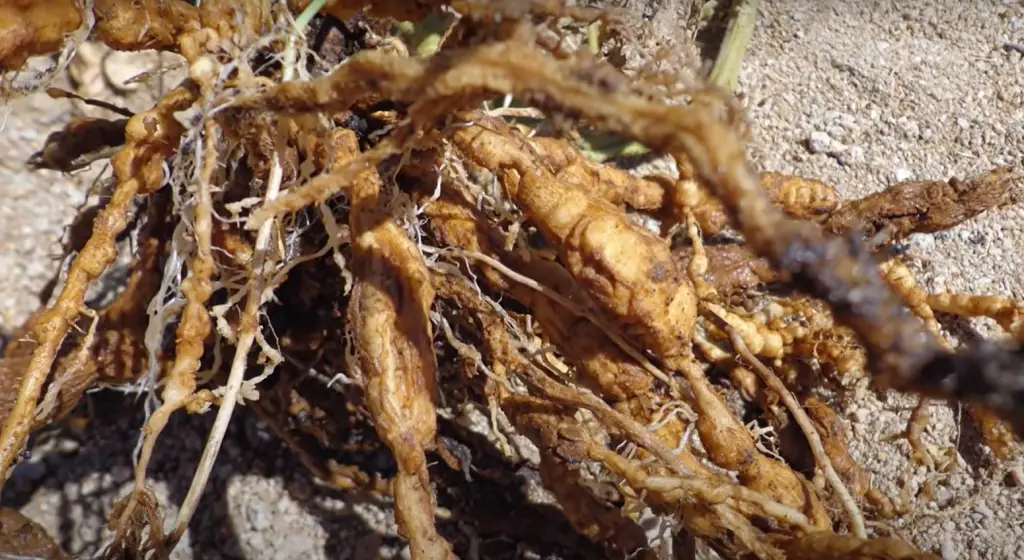
This is especially helpful when it comes to controlling aphids which can be very difficult to get rid of without the use of pesticides.
Add Nutrients To The Soil
The roots of marigolds contain compounds that release beneficial nutrients such as nitrogen, phosphorus, and potassium into the soil. These nutrients help promote strong root growth in plants and aid in disease prevention. Planting marigolds around vegetable crops helps boost their nutrition by providing them with a steady source of nutrient-rich soil.
Attract Butterflies To Your Garden
Nothing adds beauty to a garden like colorful butterflies. Planting marigolds is an easy way to draw in these delicate creatures. The flowers are a great source of nectar and pollen for them, and they love the bright colors even more!
You Can Use Them To Make a Natural Fabric Dye
Marigolds are also a great source of natural dye. The flowers can be used to create yellow, orange, or red fabric dyes. This is an easy and fun way to add color and life to your homemade clothes or accessories! To do this, simply steep the petals in boiling water for about an hour and then strain the liquid into a dye bath. Then, submerge your fabric and leave it for an hour or two until the desired color has been achieved.
Can Yield an Essential Oil, Used in Perfumery
Marigolds also yield an essential oil used in perfumery. This is created by extracting the oils from the petals of the Marigold flowers. The oil has a sweet, spicy aroma and can be used in soaps, lotions, and other beauty products.
Marigolds Can Be Cut For Floral Displays
Marigolds are also a great option for cut flower displays. They last longer than most other flowers and can be used to create stunning bouquets or decorations for parties and weddings. The bright colors and unique texture of these flowers add beauty and life to any event!
They Can Also Be Dried To Create Longer Lasting Arrangements
Marigolds can also be dried to create longer-lasting arrangements. To do this, simply hang the flowers upside down in a dark, dry place for several days until they are completely dry.
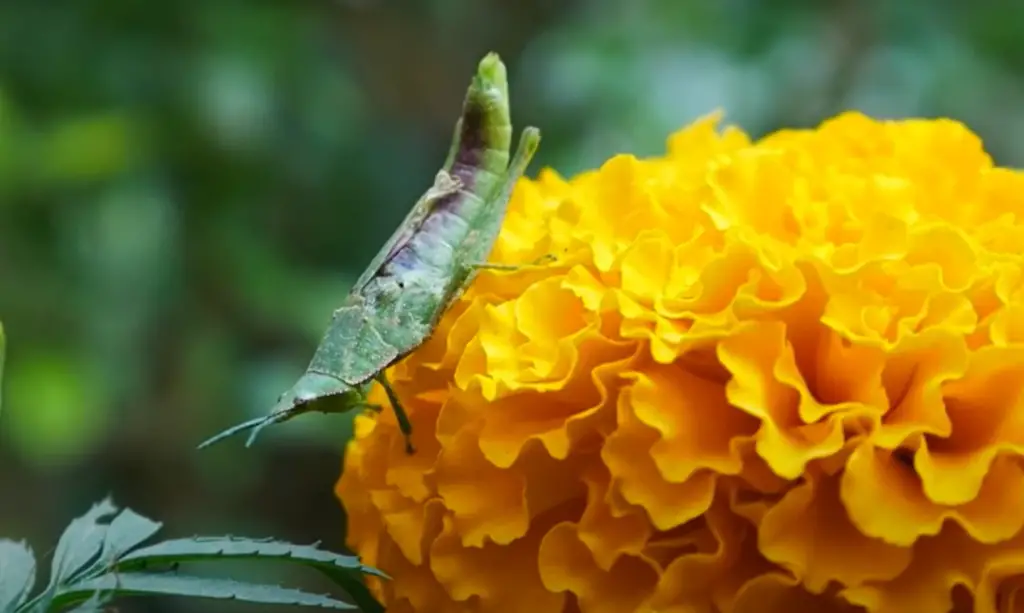
Once dried, the flowers will retain their color and texture for months!
Marigolds Are Useful For Soap Making
Marigolds are also ideal for soap making. The natural compounds in the petals of the flower can be used to create beautiful, natural soaps with a lovely floral scent. This is a great way to give your homemade soap that added touch of luxury and fragrance [3]!
How To Incorporate Marigolds in Your Vegetable Garden
Marigolds are versatile and easy-to-grow flowers that can be used in many different ways throughout your vegetable garden. Here are some tips on how to incorporate marigolds into your garden:
- Plant around the perimeter of your vegetable beds. Marigolds act as pest deterrents, so planting them around the edges of your gardens will help keep unwanted pests like rabbits and deer away from your veggies.
- Add a splash of color with marigold blooms. Not only do they make for beautiful accents, but their bright orange and yellow hues also attract helpful insects like bees and butterflies which will help pollinate your vegetables, leading to bigger yields!
- Use them to draw in beneficial predatory insects. Marigolds contain pyrethrum, which is a natural insecticide that will draw in predatory insects like ladybugs and lacewings which feed on aphids and other pests.
- Plant marigolds near tomatoes to help ward off nematodes. Studies have shown that marigolds can help protect tomatoes from root-knot nematodes, so planting them nearby can be beneficial for your tomato plants.
- Add marigold petals to salad dressings or as a garnish for soups and stews for some extra flavor and color! Marigold petals are also rich in antioxidants, so they make a healthy addition to many dishes.
By incorporating these tips into your garden design, you can reap the many benefits marigolds have to offer while also adding a pop of color and flavor to your home-grown produce!
How to maintain Marigolds?
Marigolds are easy to maintain, so even beginners can enjoy growing them. Here are some tips for keeping your marigolds healthy and blooming:
- Choose a sunny spot in your garden where the marigold plants will get at least 6 hours of direct sunlight per day.
- Plant the seeds 1/4 inch deep in well-draining soil that has plenty of organic matter incorporated into it, such as compost or aged manure. Marigolds prefer slightly acidic soil with a pH between 6.0 and 7.0.
- Water regularly but don’t overwater; allow the top inch or two of soil to dry out before watering again deeply, ensuring that the water reaches the roots.
- Fertilize your marigolds every 2-3 weeks with a balanced, all-purpose fertilizer. Follow the directions on the label for application rates and frequency.
- Deadhead spend flowers to promote more blooms throughout the season and keep plants looking tidy.
- Cut back any leggy or overgrown stems to encourage bushier growth and maintain the compact size of the plant.
- If necessary, control weed growth in and around marigold beds by hand weeding or using a pre-emergent herbicide at the beginning of each growing season before planting seeds or transplants.
- Marigolds are generally resistant to most insect pests and diseases, but watch out for aphids, whiteflies, powdery mildew, or gray mold.
- Use an appropriate pesticide if needed.
- When the weather turns cold in autumn, pull up marigold plants and compost them to prevent any possible re-growth in your garden beds.
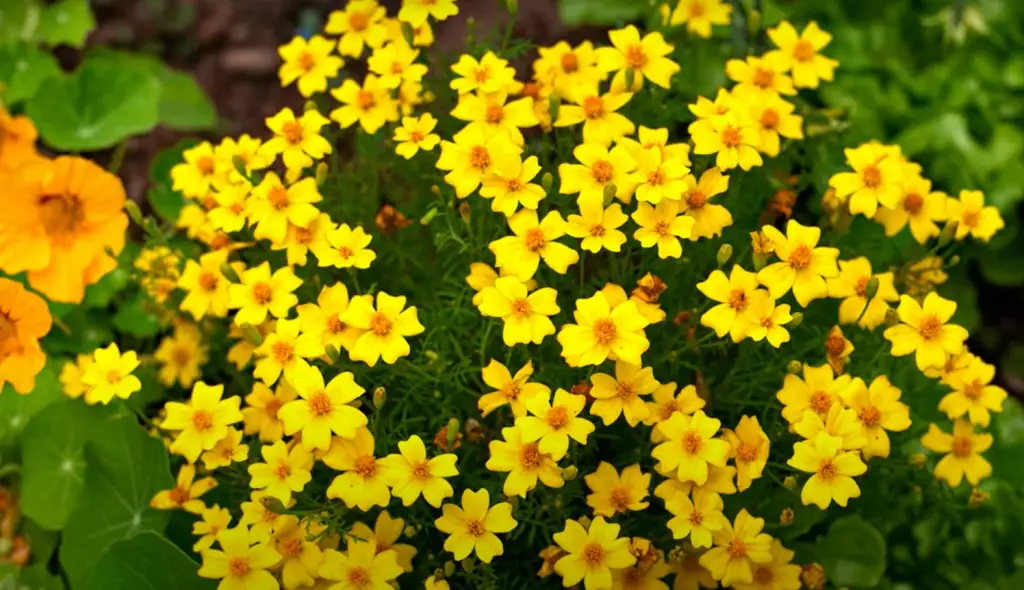
Following these simple steps will ensure that your marigolds remain healthy and blooming all season long! Enjoy your beautiful flowers!
Alternatives to growing Marigolds in your vegetable garden
- Calendula (Calendula officinalis): Also known as pot marigolds, calendulas are a popular and attractive alternative to traditional marigold varieties. They provide bright pops of yellow, orange, and red colors in your garden while also providing medicinal benefits. Calendula has anti-inflammatory properties that can be used topically to help with skin irritations and wounds.
- Chrysanthemums (Chrysanthemum morifolium): These are classic flowers which are commonly seen in gardens around the world. Chrysanthemums come in a variety of colors including white, yellow, pink and purple and they have daisy-like petals. The flower heads can be dried and used to make herbal teas.
- Nasturtiums (Tropaeolum majus): Nasturtium is a unique looking flower that adds a lot of visual interest to your garden. They come in shades of yellow, orange, red and even multicolored varieties. The leaves of the nasturtium can also be eaten as they have a mild peppery flavor and can be used as salad greens or garnishes for dishes.
- Sunflowers (Helianthus annuus): Who doesn’t love sunflowers? These bright and cheerful flowers are easy to grow from seed and require very little maintenance once established. Sunflowers produce edible seeds that can be eaten right off the plant or used to make delicious homemade snacks.
- Cosmos (Cosmos bipinnatus): Cosmos is a bright and showy flower that blooms throughout the summer months. The blossoms come in a wide range of colors including pink, white, red and orange and attract beneficial insects to your garden like bees and butterflies.
- Zinnias (Zinnia elegans): Zinnias are one of the most popular flowers for cutting gardens as they produce long-lasting blooms all season long. These colorful flowers can be found in shades ranging from yellow, orange, pink, white and purple making them perfect for adding color to any garden bed.
- Bachelor’s Buttons (Centaurea cyanus): Bachelor’s Buttons, also known as Cornflowers, are a wildflower that has been cultivated for centuries. These flowers come in shades of blue, pink and white and make beautiful additions to any garden. They are easy to grow and can be started from seed or purchased as plants at your local nursery.
- Violas (Viola odorata): Violas are often referred to as “little violets” due to their delicate petals and sweet fragrance. They come in a wide range of colors including purple, yellow, white and even bicolored varieties. You can use violas in borders or containers for a bright splash of color throughout the season.
No matter which flower you choose, adding some color to your vegetable garden is always a good idea. You can easily find these alternatives to marigolds at your local nursery or online.
FAQ
Where should I put marigolds in my garden?
Marigolds can be planted just about anywhere in your garden. They will thrive in sunny locations and soil with good drainage, but can also tolerate partial shade and moist soils. Plant them at the front of your flower beds for a splash of bright color and to deter pests like rabbits and deer. You can also add marigolds to window boxes, containers, or even interspersed throughout your vegetable garden to help repel aphids, whiteflies, nematodes, and other common garden pests. In addition, marigolds are known to attract beneficial pollinators such as bees and butterflies! Enjoy their vibrant blooms all season long!
Why are marigolds important?
Marigolds are an important asset in the garden because they can be used to deter pests, add color, attract beneficial insects, and improve soil health. Their strong scent helps keep away rabbits and deer as well as some types of insects like aphids and whiteflies. Marigolds also provide a cheerful display of bright orange, yellow, or red blooms that will bring your entire garden alive.
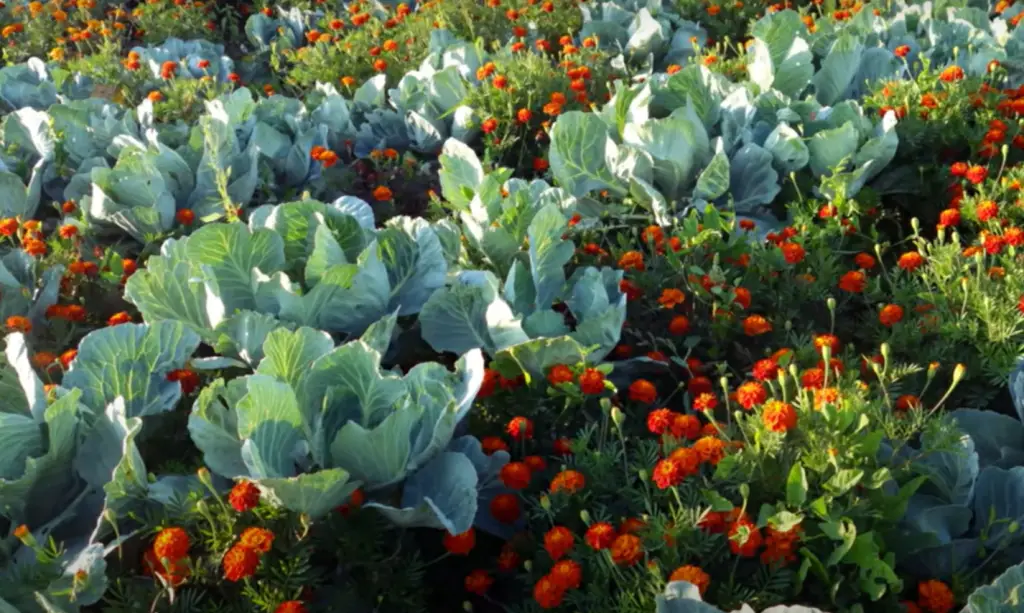
Plus, their dark green foliage is attractive year-round! Finally, marigolds are known to help improve soil health by releasing nutrients from their roots into the surrounding soil. These nutrients feed other nearby plants and vegetables so they’ll thrive too!
Do marigolds clean the air?
Marigolds are said to have air-cleaning abilities because their foliage releases limonene, a compound found in citrus that has been linked to better air quality. Although studies have not proven this claim, many gardeners report that marigolds can help make the area around them smell fresh and pleasant. Additionally, their bright blooms may also help reduce stress and anxiety when viewed from a distance.
How long do marigold flowers last?
Marigolds generally bloom for about three months during summer and early fall. Depending on the variety of marigold you’ve chosen, the flower heads may remain colorful longer after they’ve died off. When deadheading or trimming spent blooms, always leave some of the seed heads on the plant so it can reseed itself for next season.
Are marigolds easy to care for?
Marigolds are very easy to grow and care for. They prefer sunny locations with well-draining soil but they also tolerate partial shade and moist soils. Keep their soil lightly moist — not soggy or wet — and fertilize occasionally if needed. Deadhead spend flowers regularly to encourage more blooms throughout the summer. Marigolds are also quite tolerant of heat so they’ll do best in warmer climates. For more tips on how to care for marigolds, check out our blog post or contact us directly!
Are marigolds poisonous?
No, marigolds are not considered to be poisonous. They are safe for humans and animals alike and they can even be eaten in small amounts. Marigold petals have a mild flavor that can be used to add color and flavor to salads, soups, desserts, and more. Although edible, it is important to note that the leaves contain a compound known as pyrethrin which can cause skin irritation in some people so always use caution when handling them. Additionally, do not eat any part of the plant if you’re unsure of its identity as some look-alike plants can be toxic.
Can you eat marigolds?
Yes, you can eat marigolds! Their petals have a mild flavor and can be used to add color and flavor to salads, soups, desserts, and more. Marigold flowers are also known for their medicinal properties and have been used in traditional medicine for centuries. However, it is important to note that the leaves contain a compound known as pyrethrin which can cause skin irritation in some people so always use caution when handling them. Additionally, do not eat any part of the plant if you’re unsure of its identity as some look-alike plants can be toxic. When consuming marigolds, it is best to harvest only the petals — not the entire flower — and use them sparingly for maximum flavor.
What do marigolds help keep away?
Marigolds are known to have insect-repelling properties. They’re believed to help keep away mosquitos, aphids, and other pests that can damage plants in the garden.
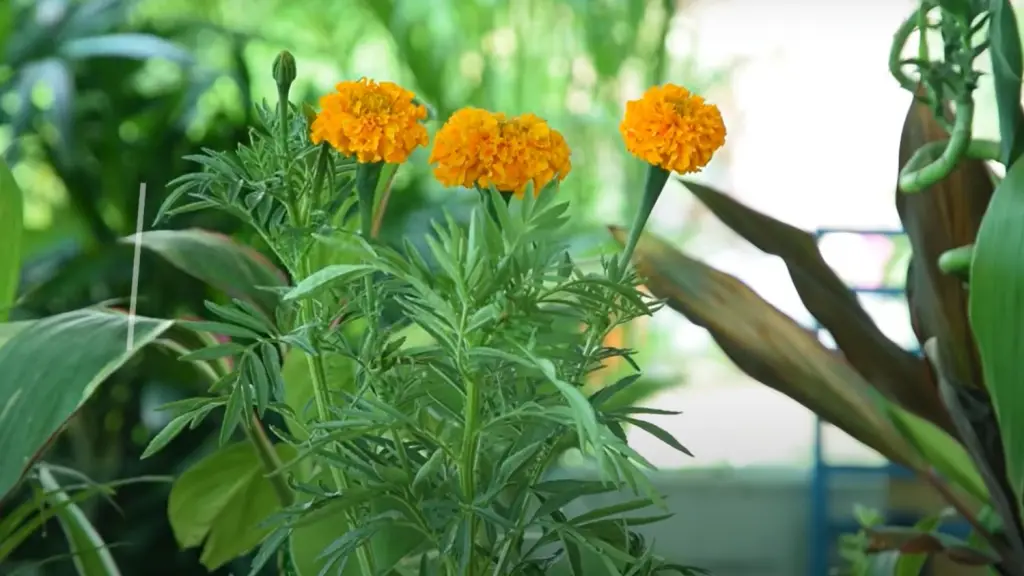
Their strong scent is also said to deter certain animals like rabbits and deer from entering your yard. Additionally, marigolds have been used as a biofumigant, meaning they release compounds into the soil that help reduce nematodes and other harmful bacteria. All of these benefits make marigolds an ideal choice for any gardener looking for an easy-to-care-for plant with multiple uses!
What should you not plant next to marigolds?
Marigolds prefer sunny locations with well-draining soil, so refrain from planting them alongside plants that require more moisture. Additionally, marigolds tend to be a bit aggressive in their growth habits and can overtake smaller, weaker plants. It’s best to plant taller vegetables like tomatoes and peppers nearby so they benefit from the additional protection against pests that marigolds provide. Finally, avoid planting marigolds next to other flowers whose colors may clash with the cheerful yellow or orange of the marigold blooms! By following these tips you can ensure your garden looks its best while still providing all the benefits of growing marigolds.
How to maintain marigolds?
It’s important to maintain your marigolds in order to keep them healthy and thriving. First, make sure they are planted in an area with plenty of sunlight as they prefer direct sun throughout the day. Second, ensure their soil is kept lightly moist but not soggy or wet. In hot climates, you may need to water more frequently. Third, fertilize occasionally if needed for extra nutrients. Lastly, deadhead spent flowers regularly to promote new blooms throughout the growing season. Following these steps will help your marigolds stay healthy and vibrant all summer long!
How to use marigolds in the garden?
Marigolds are not only easy to grow but also bring a range of benefits to your garden. Not only do they help keep pests away, but their cheerful blooms can also brighten up any outdoor space. Additionally, they’re an excellent companion plant for vegetables like tomatoes and peppers as they help deter harmful pests while also providing additional protection against disease. You can also use them as cut flowers in bouquets or dried arrangements. Whatever way you choose to use marigolds in your garden, you’ll be sure to enjoy their vibrant colors and natural pest control capabilities!
Why do you need to use caution when handling marigolds?
Marigolds contain a compound known as pyrethrin which can cause skin irritation in some people. For this reason, it is important to use caution when handling them. Additionally, if you are unsure of the plant’s identity, do not eat any part of it as some look-alike plants can be toxic. When consuming marigolds, harvest only the petals and use them sparingly for maximum flavor and safety. By following these tips you can enjoy the benefits of this colorful flower without putting yourself at risk!
How to harvest and use marigolds?
Marigolds are easy to harvest as they often produce plenty of blooms throughout the season. When harvesting, make sure to pick only the flower petals – not the entire flower – and use them sparingly for maximum flavor. The petals can be used fresh in salads, sprinkled over dishes for a pop of color, or even crystallized for garnishing cakes and other desserts. Alternatively, you can also dry the petals and add them to potpourris or herbal tea blends. Whichever way you choose to use them, marigolds are sure to bring a delightful burst of flavor and color into your home!
Useful Video: 6 Reasons Why You Should Grow Marigolds🏵️ in your Garden
Conclusion
Marigolds in your garden can add a splash of color and beauty to any outdoor space. These hardy, easy-to-care-for flowers come in a variety of shapes, sizes, colors, and scents that make them attractive additions to your garden. They are also great for providing natural pest control, as their strong scent repels many harmful insects. In addition to their practical benefits, marigolds are an inexpensive flower choice that will bring vibrancy and vitality to your landscape throughout the summer months. With just a little effort and dedication on your part, you can have gorgeous marigolds blooming in no time!
References:
- https://www.americanmeadows.com/wildflower-seeds/marigold-seeds/all-about-marigolds
- https://www.tinygardenhabit.com/where-how-to-plant-marigolds-in-the-vegetable-garden/
- https://niemifamilyfarm.ca/blog/growing-marigolds-in-the-vegetable-garden/





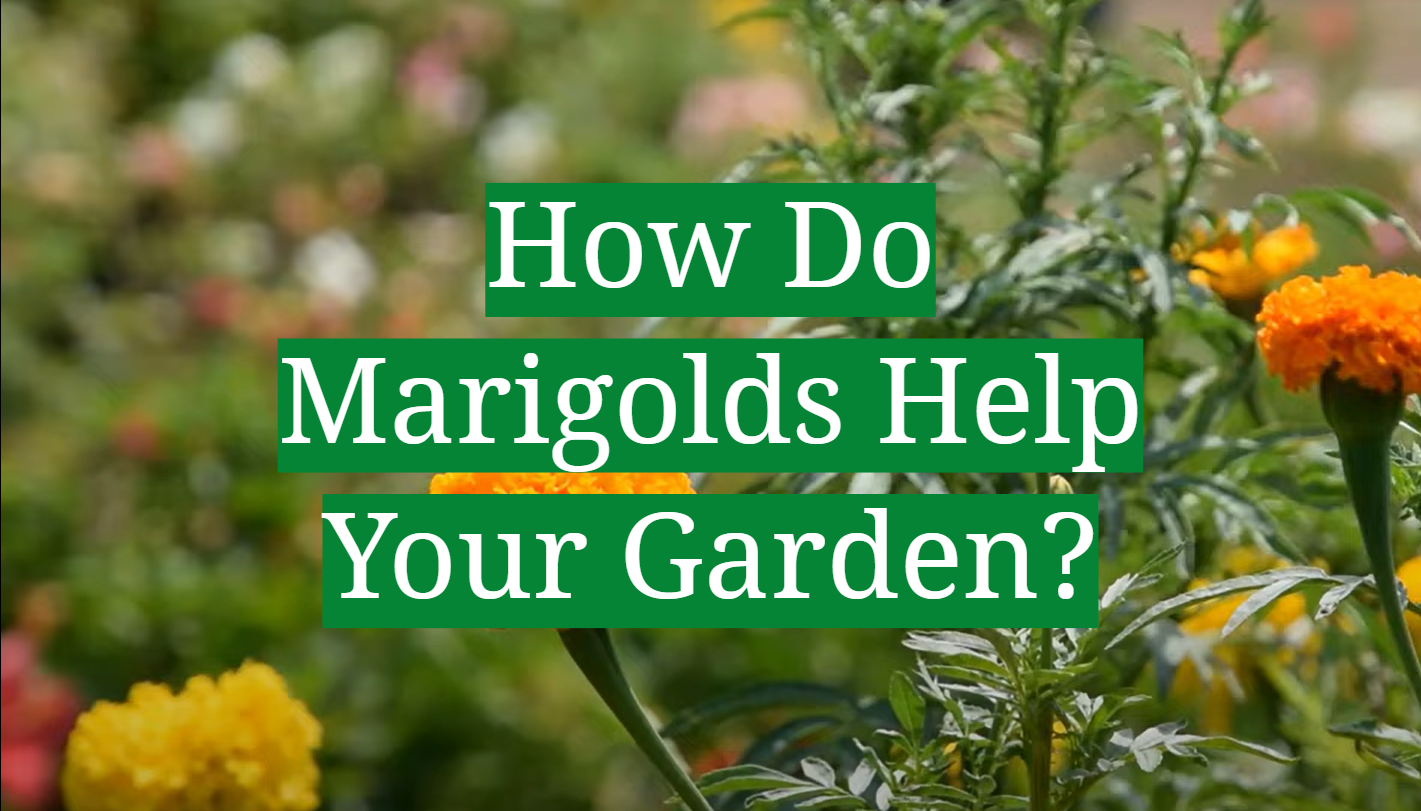
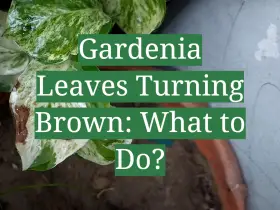


Leave a Reply
View Comments